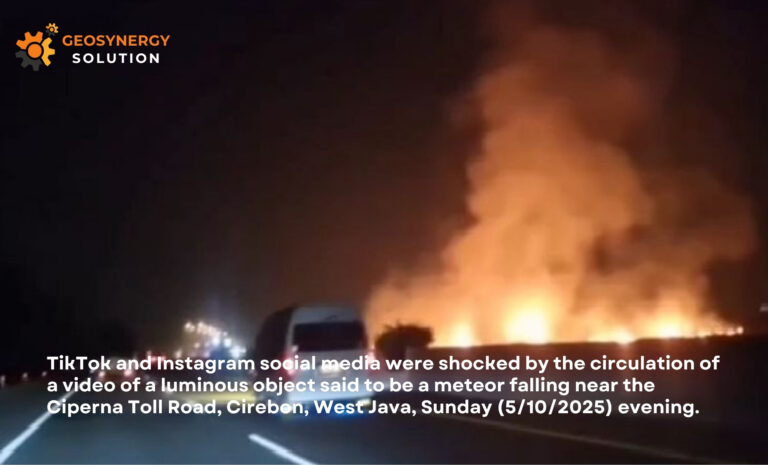
The Impact of the Cirebon Meteor on Nearby Building Structures
A loud explosion and a bright fireball startled residents of Cirebon, West Java, as a meteor streaked across the evening sky. The incident, confirmed by the Indonesian National Research and Innovation Agency (BRIN), has drawn national attention. Experts and engineers are now studying how the meteor’s shockwave might have affected nearby structures and soil conditions.
Scientific Findings on the Cirebon Meteor Event
According to Dr. Thomas Djamaluddin, a researcher at BRIN’s Space Research Center, the sound detected across Cirebon and Kuningan originated from a meteor estimated to be 3–5 meters in diameter.
Based on seismic data from the BMKG Cirebon Station, vibrations were recorded at Astanajapura (ACJM) around 18:39 WIB, confirming that the blast produced detectable ground motion. CCTV footage and eyewitnesses from Tasikmalaya also observed a bright fireball moving southwest to northeast across the sky.
“The phenomenon was caused by a moderately large meteor passing from the southwest over Kuningan and Cirebon around 18:35 to 18:39 WIB,” Thomas explained on his official blog.
He compared this event to the Bone meteor in 2009 (South Sulawesi), which was much larger and caused window glass to shake over a 10 km radius. The Cirebon meteor, while smaller, still produced a noticeable shockwave strong enough to trigger local seismic instruments.
Meteor Impact and Ground Vibration
When a meteor enters Earth’s atmosphere, it releases massive energy through heat and pressure, creating both airborne and ground shockwaves. These waves can mimic the effects of a minor earthquake, especially when the explosion occurs close to the surface.
In Cirebon, BMKG’s vibration records suggest that certain areas might have experienced low-intensity tremors capable of stressing older or weakly built structures. Such energy transfer from atmospheric blasts to the ground is rare but important to analyze for safety reasons.
Related article: Freeport Underground Mine Accident Victims Identities Confirmed
Structural and Geotechnical Assessment
Post-event inspections by engineers focus on cracks, wall deformation, and material fatigue that could arise from shock-induced vibrations. While modern reinforced buildings are designed to absorb seismic loads, older structures with rigid frames or masonry walls are more vulnerable.
From a geotechnical perspective, meteor shockwaves can slightly alter soil density, stiffness, or compaction, especially in loose sandy soils. Conducting dynamic soil testing—such as Cyclic Triaxial Tests or Simple Shear Tests—helps evaluate how the soil reacts to extreme vibration and stress.
Such assessments are vital for long-term foundation safety and urban resilience.
Environmental and Safety Considerations
Beyond structural concerns, meteor events can produce dust, debris, and fine particulates that spread through the atmosphere. Environmental testing and air quality monitoring are recommended, especially in densely populated areas near the impact path.
The Cirebon meteor, though small compared to past events, highlights the importance of rapid environmental and geotechnical response protocols.
Lessons from Past Meteor Events
In 2009, a meteor explosion in Bone, South Sulawesi, caused widespread vibrations, broken windows, and mild panic. NASA estimated that the Bone meteor measured around 10 meters in diameter—about twice the size of the Cirebon meteor.
The smaller size in Cirebon limited damage, but the event served as a reminder that even smaller meteors can create measurable ground effects.
The Cirebon meteor event demonstrates how cosmic phenomena can directly influence our built environment. Although the overall damage is minimal, this case emphasizes the need for scientific observation, structural monitoring, and soil testing after shockwave-producing events.
By combining research data with engineering analysis, Indonesia can enhance its preparedness and public safety for future meteor occurrences.

